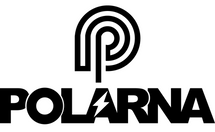E-Bike Classes: The Difference Between Class 1, 2, & 3

What are electric bike classes and what do they entail? If you're not aware what the differences between each class are or what you're searching for, choosing between class 1, 2, and 3 e-bike classes can be challenging. Fortunately for you, we at Aventon are working hard to establish ourselves as your go-to e-bike experts, assisting you in making the best decision possible when selecting the type of e-bike that is right for you. As previously stated, there are numerous variables that a novice bicycle rider must consider while selecting the best electric bike.
Knowing the model of e-bike you want and being able to ride where you live are two of these variables to consider. Since the introduction of ebikes to the market, numerous laws have been enacted. We all know that ebikes have arrived on the scene and are here to stay. They have had a significant impact on the industry. Our posts discuss the various advantages and peculiarities of ebikes. Keep in mind that rules and restrictions differ by state and city in the United States, so do your homework before deciding where you can ride your e-bike. So let's get started learning about the differences between the three different types of e-bikes.
Class 1 E-Bike:You might wonder what makes a class 1 e-bike a class 1. To begin with, a class 1 e-bike is defined as having only PEDAL ASSIST and a top speed of 20 mph with no throttle. What is the definition of pedal assist? An e-bike with pedal assist has an electric motor that is only triggered after you start pedaling. Your e-bike will reach a top speed of 20 mph (miles per hour) once you begin pedaling. Because of the modest speed and operation, Class 1 ebike riders are allowed to ride anyplace they would ride any other sort of bike. Ebikes are permitted to use bike lanes, bike paths, and the road.
Class 2 E-Bike:What distinguishes a class 2 e-bike from others? A class 2 e-bike has a THROTTLE and can reach a top speed of 20 mph. What is a throttle, and how does it function? A throttle is an ebike function that comes in the form of a grip-twist or a button that you press and the bike takes off without you needing to peddle. The safety feature on our Polarna ebike M4 requires you to start pedaling before the throttle will engage. For safety and regulatory reasons, the throttle is set to a specific speed.The Polarna ebike M4 has a top speed of 20 mph on throttle and 28 mph with pedal aid, while the Polarna ebike M6 has a top speed of 20 mph on throttle and 28 mph with pedal assist for more daring and adventurous bike excursions. In most situations, you'll be able to ride a class 2 ebike wherever a non-ebike would be allowed.
Class 3 E-Bike: What distinguishes a class 3 ebike from others? A class 3 ebike has only Pedal Assist and has a top speed of 28 mph. Certain bike routes and bike pathways are closed to class 3 e-bikes due to their high power. The Polarna ebike M6 is unique in that it has both pedal assist and throttle. The Polarna ebike follows suit. We want to create high-quality products that are accessible to all people, which is why we made our e-bikes accessible to anyone.
As previously said, rules and regulations differ depending on where you live. When it comes to the laws and regulations governing e-bike classes, bike store owners are well-versed. They should also be able to assist you in finding the greatest electric bike. Every e-bike comes with a sticker that identifies the e-class. bike's If you're looking for a local dealer who sells our ebikes, check out our Elite Dealer Locator page.
To learn more about policies and laws and regulations about ebikes visit peopleforbikes.org




